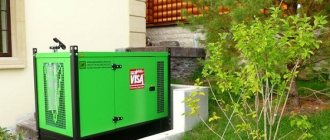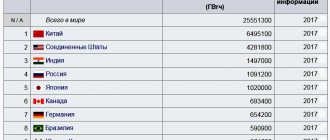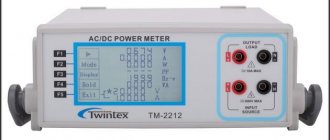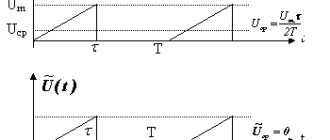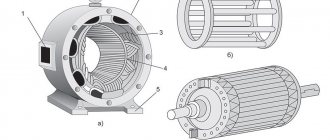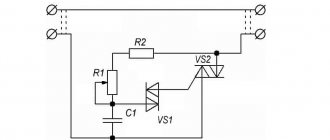Providing the needs of humanity with sufficient energy is one of the key tasks facing modern science. In connection with the increase in energy consumption of processes aimed at maintaining the basic conditions of society, acute problems arise not only in the generation of large volumes of energy, but also in the balanced organization of its distribution systems. And the topic of energy transformation is of key importance in this context. The coefficient of production of useful energy potential, as well as the level of costs for servicing technological operations within the framework of the infrastructure used, depend on this process.
General information about conversion technology
The need to use different types of energy is associated with differences in the processes that require a power resource. Heat is required for heating, mechanical energy is required to power the movement of mechanisms, and light is required for lighting. Electricity can be called a universal source of energy both in terms of its transformation and in terms of its application in various fields. Natural phenomena are usually used as initial energy, as well as artificially organized processes that contribute to the generation of the same heat or mechanical force. In each case, a certain type of equipment or complex technological structure is required, which, in principle, allows for the conversion of energy into the form required for final or intermediate consumption. Moreover, among the tasks of the converter, not only transformation stands out as the transfer of energy from one type to another. Often this process also serves to change some energy parameters without transforming it.
The transformation itself can be single-stage or multi-stage. In addition, for example, the operation of photocrystalline solar generators is usually considered as the transformation of light energy into electricity. But at the same time, it is also possible to transform the thermal energy that the Sun gives to the soil as a result of heating. Geothermal modules are placed at a certain depth in the ground and, through special conductors, fill batteries with energy reserves. In a simple conversion scheme, the geothermal system provides the accumulation of heat energy, which is given to the heating equipment in its pure form with basic preparation. The complex structure uses a heat pump in a single group with heat condensers and compressors that provide heat conversion and electricity.
References
- Electricity around the world Archived 2009-09-06 on the Wayback Machine, Kropla.com
- Abraham I. Pressman (1997). Switching power supply
. McGraw-Hill. ISBN 0-07-052236-7. - Ned Mohan, Tore M. Undeland, William P. Robbins (2002). Power Electronics: Converters, Applications and Design
. Wiley. ISBN 0-471-22693-9. - Fang Lin Luo, Hong Ye, Muhammad H. Rashid (2005). Digital Power Electronics and Applications
. Elsevier. ISBN 0-12-088757-6. - Fang Lin Luo, Hong Ye (2004). Advanced DC/DC Converters
. CRC Press. ISBN 0-8493-1956-0. - Minggliang Liu (2006). We make clear circuits with switchable capacitors
. Elsevier. ISBN 0-7506-7907-7.
Types of electrical energy conversion
There are different technological methods for extracting primary energy from natural phenomena. But even more opportunities for changing the properties and forms of energy are provided by accumulated energy resources, since they are stored in a form convenient for transformation. The most common forms of energy conversion include radiation, heating, mechanical and chemical operations. The most complex systems involve molecular degradation processes and multilevel chemical reactions that combine multiple transformation steps.
The choice of a specific transformation method will depend on the conditions of the process organization, the type of initial and final energy. Among the most common types of energy that, in principle, participate in transformation processes are radiant, mechanical, thermal, electrical and chemical energy. At a minimum, these resources are successfully exploited in industry and households. Indirect energy conversion processes, which are derivatives of one or another technological operation, deserve special attention. For example, metallurgical production requires heating and cooling operations, which produce steam and heat as derived, but not target, resources. In essence, these are waste products that are also used, transformed or used within the same enterprise.
Heat energy conversion
One of the oldest energy sources in terms of development and the most important for maintaining human life, without which it is impossible to imagine the life of modern society. In most cases, heat is converted into electricity, and a simple scheme for such transformation does not require connecting intermediate stages. However, in thermal and nuclear power plants, depending on their operating conditions, a preparation stage with the conversion of thermal into mechanical energy can be used, which requires additional costs. Today, direct thermoelectric generators are increasingly used to convert thermal energy into electricity.
The transformation process itself occurs in a special substance, which is burned, releases heat and subsequently acts as a source of current generation. That is, thermoelectric installations can be considered as zero-cycle sources of electricity, since their operation starts even before the appearance of base thermal energy. The main resource is fuel elements – usually gas mixtures. They are burned, resulting in heating of the heat-distributing metal plate. In the process of heat removal through a special generator module with semiconductor materials, energy conversion occurs. Electric current is generated by a radiator unit connected to a transformer or battery. In the first option, energy is immediately supplied to the consumer in finished form, and in the second, it is accumulated and released as needed.
DC Power Conversion
DC to DC
Main article: DC-DC converter
The following devices can convert DC to DC current:[ further explanation required
]
- Linear regulator
- Voltage regulator
- Motor generator
- Rotary transducer
- Switching power supply
| This section needs expansion . |
DC to AC
The following devices can convert DC to AC:[ further explanation required
]
- Power inverter
- Motor generator
- Rotary transducer
- Switching power supply
| This section needs expansion . |
Generation of thermal energy from mechanical
Also one of the most common ways to obtain energy as a result of transformation. Its essence lies in the ability of bodies to give off thermal energy in the process of doing work. In its simplest form, this energy transformation scheme is demonstrated by the example of the friction of two wooden objects, which results in fire. However, to use this principle with tangible practical benefit, special devices are required.
In households, the transformation of mechanical energy takes place in heating and water supply systems. These are complex technical structures with a magnetic core and a laminated core connected to closed electrically conductive circuits. Also inside the working chamber of this design there are heating pipes, which are heated under the action of the work done from the drive. The disadvantage of this solution is the need to connect the system to the electrical network.
In industry, more powerful liquid-cooled converters are used. The source of mechanical work is connected to closed water tanks. During the movement of the executive bodies (turbines, blades or other structural elements) conditions for vortex formation are created inside the circuit. This happens during moments of sudden braking of the blades. In addition to heating, in this case the pressure also increases, which facilitates the processes of water circulation.
Conversion of electromechanical energy
Most modern technical units operate on the principles of electromechanics. Synchronous and asynchronous electrical machines and generators are used in transport, machine tools, industrial engineering units and other power plants for various purposes. That is, electromechanical types of energy conversion are applicable to both generator and motor operating modes, depending on the current requirements of the drive system.
In a generalized form, any electrical machine can be considered as a system of mutually moving magnetically coupled electrical circuits. Similar phenomena also include hysteresis, saturation, higher harmonics and magnetic losses. But in the classical view, they can be classified as analogues of electric machines only if we are talking about dynamic modes when the system operates within the energy infrastructure.
The electromechanical energy conversion system is based on the principle of two reactions with two-phase and three-phase components, as well as the method of rotating magnetic fields. The rotor and stator of motors perform mechanical work under the influence of a magnetic field. Depending on the direction of movement of charged particles, the operating mode is set - as a motor or generator.
Other systems
Main article: Three-phase electrical power
There are also devices and methods for converting between power systems designed for single-phase and three-phase operation.
Standard supply voltage and frequency vary from country to country and sometimes within countries. In North America and northern South America it is usually 120 volts, 60 hertz (Hz), but in Europe, Asia, Africa and many other parts of the world it is usually 230 volts, 50 Hz.[1] Aircraft often use 400 Hz internal power, so converting 50 Hz or 60 Hz to 400 Hz is necessary for use in the ground power supply used to power the aircraft while it is on the ground. Conversely, the internal 400Hz internal power can be converted to 50Hz or 60Hz for convenient outlets available to passengers during flight.
Some specialized circuits can also be considered power converters, such as the flyback transformer of the CRT power subsystem, which generates high voltage with a frequency of approximately 15 kHz.
Consumer electronics typically include an AC adapter (a type of power supply) to convert AC mains voltage into low voltage DC suitable for consumption by microchips. Consumer voltage converters (also known as "travel converters") are used when traveling between countries that use ~120 VAC mains power instead of ~240 VAC. (There are also consumer "adapters" that simply form an electrical connection between two differently shaped AC plugs and receptacles, but they do not change either voltage or frequency.)
Generating electricity from chemical energy
The total chemical source of energy is traditional, but methods of its transformation are not so common due to environmental restrictions. Chemical energy itself is practically never used in its pure form, at least not in the form of concentrated reactions. At the same time, natural chemical processes surround a person everywhere in the form of high- or low-energy combinations, which manifest themselves, for example, during combustion with the release of heat. However, the conversion of chemical energy is purposefully organized in some industries. Typically, conditions are created for high-tech combustion in plasma generators or gas turbines. A typical reagent for these processes is a fuel cell, which contributes to the production of electrical energy. From an efficiency point of view, such transformations are not as beneficial as compared to alternative methods of generating electricity, since some of the useful heat is dissipated even in modern plasma installations.
Conversion of solar radiation energy
As a method of energy conversion, the process of processing sunlight may in the near future become the most popular in the energy sector. This is due to the fact that even today every homeowner can theoretically purchase equipment for converting solar energy into electrical energy. The key feature of this process is that the accumulated sunlight is free. Another thing is that this does not make the process completely cost-free. Firstly, there will be costs associated with the maintenance of solar batteries. Secondly, generators of this type themselves are not cheap, so few people can yet afford the initial investment in organizing their own mini-power station.
What is a solar energy generator? This is a set of photovoltaic panels that convert the energy of the sun's rays into electricity. The very principle of this process is in many ways similar to the operation of a transistor. Silicon is used as the main material for the manufacture of solar cells in different versions. For example, a device for converting solar energy can be poly- or monocrystalline. The second option is preferable in terms of performance characteristics, but is more expensive. In both cases, the photocell is illuminated, during which the electrodes are activated and, in the process of their movement, an electrodynamic force is generated.
Steam energy conversion
Steam turbines can be used in industry as a way to transform energy into an acceptable form, and as an independent generator of electricity or heat from specially directed flows of conventional gas. Turbine machines are not the only ones used as devices for converting electrical energy in conjunction with steam generators, but their design is optimally suited for organizing this process with high efficiency. The simplest technical solution is a turbine with blades, to which nozzles with supplied steam are connected. As the blades move, the electromagnetic installation inside the apparatus rotates, mechanical work is performed and current is generated.
Some turbine designs have special extensions in the form of stages, where the mechanical energy of the steam is converted into kinetic energy. This feature of the device is determined not so much by the interests of increasing the energy conversion productivity of the generator or by the need to generate kinetic potential, but by providing the possibility of flexible regulation of the turbine operation. The expansion in the turbine provides a control function, which makes it possible to effectively and safely regulate the amount of energy generated. By the way, the expansion working area, which is included in the conversion process, is called the active pressure stage.
AC Power Conversion
AC to DC
The following devices can convert AC to DC:[ further explanation required
]
- Rectifier
- Network power supply unit (PS)
- Motor generator
- Rotary transducer
- Switching power supply
| This section needs expansion . |
AC to AC
Main article: AC-to-AC converter
The following devices can convert AC to AC current:[ further explanation required
]
- Transformer or autotransformer
- Voltage transformer
- Voltage regulator
- Cycloconverter
- Variable frequency transformer
- Motor generator
- Rotary transducer
- Switching power supply
| This section needs expansion . |
Methods of energy transfer
Methods of energy transformation cannot be considered without the concept of its transmission. Today, there are four ways of interaction of bodies in which energy transfer occurs - electrical, gravitational, nuclear and weak. Transmission in this context can also be considered as a method of exchange, therefore, the performance of work during energy transfer and the heat exchange function are fundamentally separated. What energy transformations involve doing work? A typical example is a mechanical force in which macroscopic bodies or individual particles of bodies move in space. In addition to mechanical force, magnetic and electrical work are also distinguished. The key unifying property for almost all types of work is the ability for complete quantitative transformation between themselves. That is, electricity is transformed into mechanical energy, mechanical work into magnetic potential, etc. Heat exchange is also a common method of energy transfer. It can be undirected or chaotic, but in any case there is movement of microscopic particles. The number of activated particles will determine the amount of heat - useful heat.
Power generation
electromechanical alternating current generators are the most common
. They convert the mechanical energy of rotor rotation into the energy of inductive alternating current, which arises due to the phenomenon of electromagnetic induction.
In Fig. Figure 1 illustrates the basic idea of an alternator: a conducting frame (called an armature
) rotates in a magnetic field.
Fig.1. Alternator circuit
The magnetic flux through the frame changes over time and generates an induced emf, which leads to the appearance of an induced current in the frame. Using special devices (rings and brushes), alternating current is transmitted from the frame to the external circuit.
If the frame rotates in a uniform magnetic field with a constant angular velocity, then the resulting alternating current will be sinusoidal. Let's show it.
Let's choose the direction of the normal vector to the plane of the frame. The vector thus rotates along with the frame. The direction of the frame bypass is considered positive if from the end of the vector this bypass is seen counterclockwise.
Recall that current is considered positive if it flows in a positive direction (and negative otherwise). An induced emf is considered positive if it creates a current in the positive direction (and negative otherwise).
Let us assume that at the initial moment of time the vectors and are codirectional. Over time, the frame will rotate at an angle. The magnetic flux through the frame at the moment of time is equal to:
(1)
where is the area of the frame. Differentiating by time, we find the induced emf:
(2)
If the resistance of the frame is equal to , then a current arises in it:
(3)
As we can see, the current actually changes according to a harmonic law, that is, it is sinusoidal.
In real alternating current generators, the frame contains not one turn, as in our circuit, but a large number of turns. This allows you to increase the induced emf in the frame by several times. Why?
It's not difficult to explain. In fact, the magnetic flux through each turn of the area is still determined by expression (1), so the induced emf in one turn according to formula (2) is equal to: . All these induced emfs arising in each turn are added to each other, and the total emf in the frame will be equal to:
Current strength in the frame:
where there is still frame resistance.
In addition, the frame is equipped with an iron (or steel) core. Iron multiplies the magnetic field inside itself, and therefore the presence of a core allows you to increase the magnetic flux through the frame by hundreds and even thousands of times. As follows from formulas (2) and (3), the induced emf and the current in the frame will increase by the same amount.
